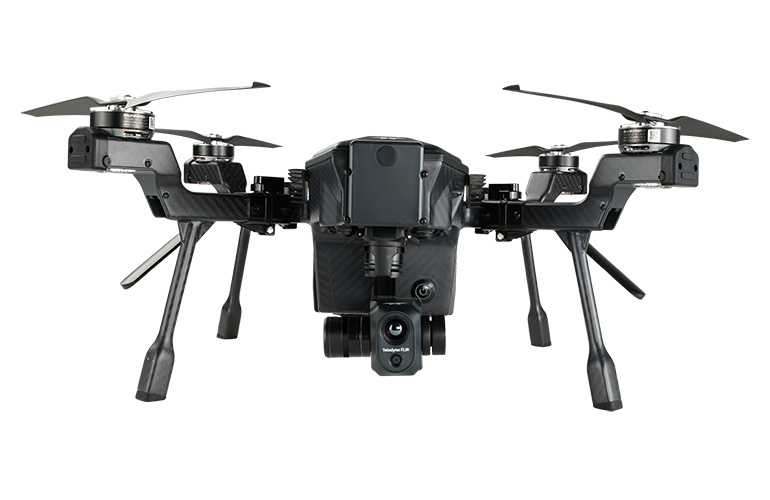|
Listen to this article  |

The IP-54-rated aircraft features a 31-minute flight time, radar-based front collision avoidance, and backpack portability, so professional UAV pilots can fly safely when and where the mission demands. | Credit: FLIR
Teledyne FLIR, part of Teledyne Technologies Incorporated, launched SIRAS, a professional drone that includes a quick-connect dual radiometric thermal and visible camera payload. Engineered for data security, performance, and affordability, SIRAS is optimized for industrial and utility inspection, public safety, firefighting, and search and rescue missions.
Teledyne acquired FLIR for $8 billion in a major merger, early in 2021. Since the acquisition, the new division has continued to engineer new products and expand its portfolio of drone-specific options.
“Designed to provide pilots with the flexibility to get the job done, SIRAS delivers a geofence-free flight experience with thermal and visible imaging capabilities at $9,695 USD,” said, Mike Walters, vice president of product management, Teledyne FLIR. “SIRAS is the only enterprise drone to currently incorporate the patented MSX technology, which overlays the edge detail from the visible camera on the thermal image to provide critical information in real-time.”
The IP-54-rated aircraft features a 31-minute flight time, radar-based front collision avoidance, and backpack portability, so professional UAV pilots can fly safely when and where the mission demands. The included Vue TV128 payload features a quick-connect gimbal, which provides imagery compatible with FLIR Thermal Studio and leading third-party photogrammetry applications. The 16MP visible camera can zoom 128x to pinpoint details. The integrated 640×512 pixel, radiometric Boson provides best-in-class thermal imagery, 5x digital zoom, and temperature measurement of every pixel in the scene.
With a startup time of one minute, pilots can get eyes on the scene quickly and maintain control via a dual-band radio (2.4/5.8 GHz) connection, while hot-swappable batteries ensure efficient operation. To improve data security, SIRAS stores imagery on an onboard SD card and does not include cloud connection capability. Furthermore, pilots are not required to create an online profile, increasing ease of use and reducing potential unintended online data access.
The SIRAS aircraft was designed in collaboration with and is manufactured by Coretronic Intelligent Robotics Corporation (CIRC) in Taiwan, a subsidiary of Coretronic Group. Final payload integration and quality control are completed in the USA.
SIRAS will begin shipping in the fourth quarter of 2022 in the US. SIRAS is dual use and classified under US Department of Commerce jurisdiction as EAR 6A003.b.4.a.
Credit: Source link


Comments are closed.